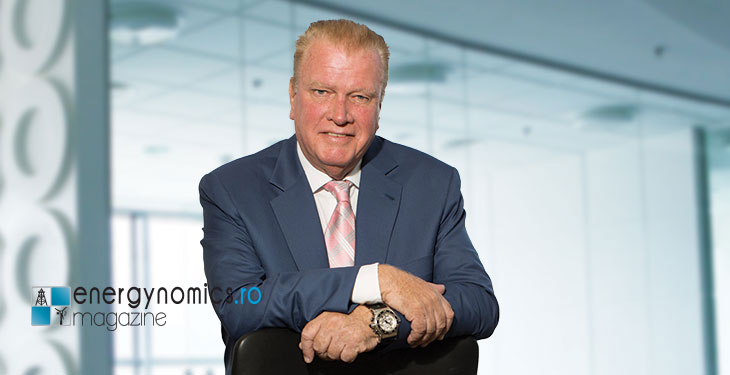Nobel Oil, a name that resonates throughout the last two centuries of petroleum history, has decided to access the Romanian market, expanding their operations from US and Azerbaijan. They did not come on their own; but found guidance and leadership in John Long, an Irishman resident in Bucharest and a downstream specialist who has experienced first-hand the creation of fuel markets in Romania. For more than two decades, he used his skills to create the distribution businesses of Shell, Lukoil and Rompetrol in Romania. Now, he agreed to talk to energynomics.ro Magazine about personal background and business decisions in a complicated context for the distribution of oil-based fuels.
Mr. John Long, tell us about your business experience in oil in general, and in Romania, in particular, especially in terms of oil products distribution. When did you come here and when things were tough, why did you kept developing new networks?
I was very lucky. When I left University and entered the oil industry, I joined not just one company, but 3. At that time, Shell, BP and National Benzole marketed together in the UK and I was an employee of all 3 companies. My job was to allocate plots keeping the pre-agreed volume balance so there was little margin for error as the companies marketed in the ratios 3-2-1. If my judgement was out, I would immediately hear from the other 2 brands. Accuracy was crucial. I didn’t possess the skill, but under tremendous pressure I developed it and before long, it was in my blood. And the experience transformed me into the oil equivalent of a wine taster. Shell recognized this in me and employed me to exclusively build networks for them around the world. The rest is history for me.
What is it about Romania’s oil business that fascinated you for more than two decades?
I came to Romania in 1992 and spent two years lobbying the government to improve the margin, as no self-respecting investor would have entered the market at the prevailing one. Only Petrom was represented here at that time and every night there were huge queues at the pumps and a state supported coupon system existed. I knew that by building up more stations it would ease the situation, but I could not do it because the margin would not permit and my shareholders refused to invest. Eventually, the Government relented in 1994 and that is when I opened the first Shell station. It proved such a major event that the Romanian President himself attended the opening.
Times were much tougher then than they are now. Margins were extremely low, predicting infrastructure changes almost impossible and we had no way of knowing how we would be received by the public at large. In the years following Shell’s trail blazing, the market grew, as expected, but demand has always outstripped supply and even today there is headroom for more stations.
When one develops a new fuel distribution network, or is brought in to take one to the next level, what are the toughest things one must do?
A fuel distribution network is the shop window of every oil company and, as we say in the industry, retail is detail. Therefore is important that the location is triple prime, the layout is optimum (there are 32 variations to choose from), the RVI (retail visual identity) must be eye catching – the list is almost endless. This is in addition to starting and registering a new company and recruiting staff for head office and on-site staff and training them.
Very few people buy existing networks, unless they are sold by major oil companies. This is because some 70% percent of a station is under ground and not visible. European legislation has changed dramatically since the original stations were built. We are now required to install double walled tanks with leak detection, electronic tanks probes, plastic piping, stages 1 and 2 vapor recovery provision etc. For these reasons the preference for the new market entrants is to build green-field. Organic growth is painfully slow but it’s considered worthwhile for longer term sustainability.
Now you are again involved in a new market entry in Romania, Nobel Oil. Tell us a bit about this company.
Nobel Oil Downstream Romania is a subsidiary of Nobel Oil Services UK Ltd, one of the leading providers of drilling, engineering and project management, maintenance, procurement and enhanced oil recovery services in the Caspian region. The company’s trading group is active internationally in the sale and trading of crude oil, natural gas and refined products.
Nobel Oil is aiming to emulate the business philosophy of Ludvig and Robert Nobel, the founders of the legendary Branobel Oil Company, one of the most prestigious oil companies in the world at the end of the 19th century. A considerable interest in the operations in Romania has been shown by Gustaf Nobel, a member of the Board of Directors of Nobel Oil Services UK Ltd and the great grandson of Ludvig Nobel. He has visited Romania on two previous occasions to support our project and was in Iași, in November, to open our first station.
————————————-
The full version of this article can be read in printed edition of energynomics.ro Magazine, issued on December 2015.
In order to receive the next issue (March 2016) of energynomics.ro Magazine for free, we encourage you to write us at [email protected] to include you in our distribution list.
